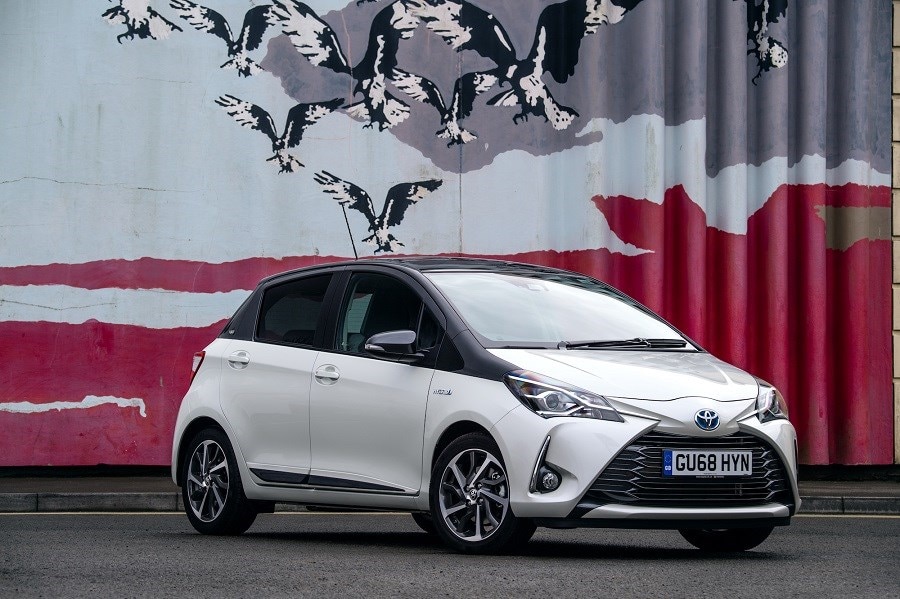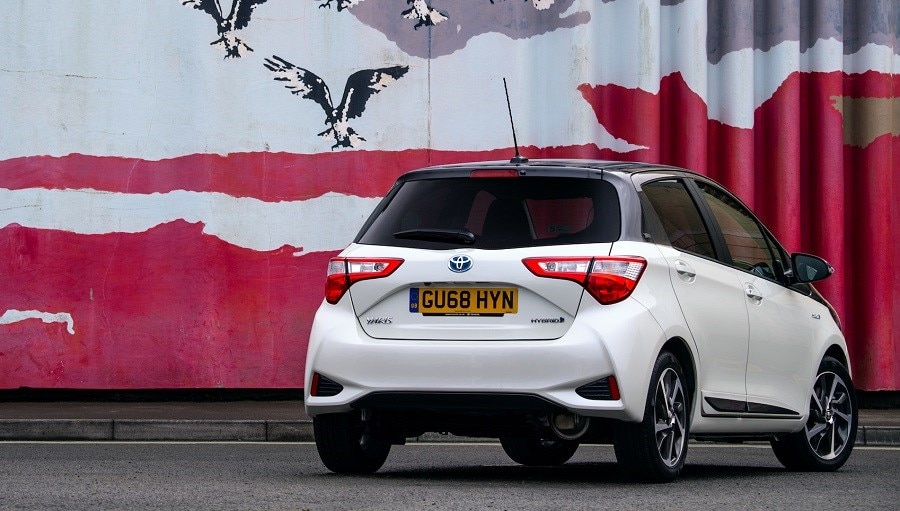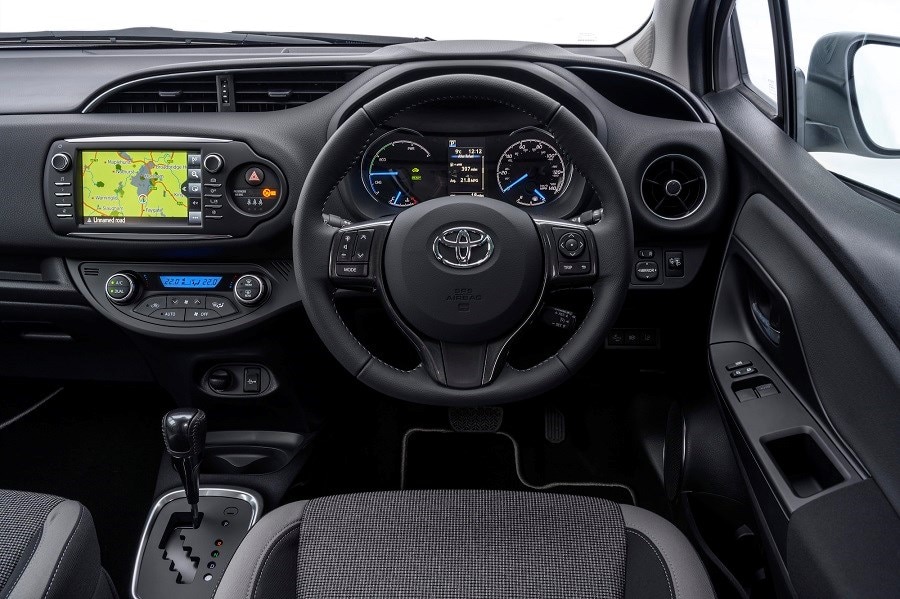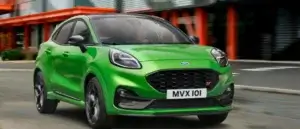Latest model
For 2017, Toyota revised its Yaris for the second time. The alterations were largely minor, with the supermini benefitting from new rear lights, new bumpers and a fresh colour palette. Revised interior elements and materials were also used, with each trim level offering a different colour for the cabin.
Hot hatch fans were delighted by the Yaris GRMN, which was the first true Toyota hot hatch in years. The rally-inspired model used a supercharged 1.8-litre petrol engine that produced 205bhp.
To mark 20 years since the Yaris was unveiled at the 1998 Paris Motor Show, Toyota revealed a new Y20 special edition at the 2018 event. An original launch edition was limited to 1,998 units, and came in a gold paint similar to that of the original car. A non-limited Y20 model comes with dark grey styling features, a bi-tone roof, 16-unch alloy wheels and tinted glass.
Toyota also introduced the GR Sport, which aims to build on the success and popularity of the GRMN with styling details taken from the hot hatch, 17-inch alloy wheels and adjustments to the suspension and handling. It looks the part, but it’s not as sporty as it appears as it’s only offered with the sluggish hybrid powertrain.
Value for money
The Yaris is attractively priced, starting at £12,995. For that money you get an entry-level Active-spec car, which comes with plenty of kit — particularly when it comes to safety equipment. As standard it gets autonomous emergency braking, automatic lights and lane departure warning, while it misses out on a touchscreen and alloy wheels, which buyers have come to expect from superminis.
By comparison the hybrid looks a bit expensive, as it commands a £3,000 premium over the standard petrol model. The range-topping GR Sport and Excel hybrids look quite overpriced next to more accomplished rivals, even when you consider all the kit that comes as standard.
Anyone wanting cheap and reliable transport will be able to find a first-generation Yaris for under £1,000, even if it has low mileage.
As for the third-generation car, the cheapest we could find was a 2012 model for £3,000, which had lot of miles on the clock. Expect to pay around £4,000 for something that has covered around 60,000 miles. There are also some good deals on nearly-new versions, with one-year-old examples available at around £10,000; some £3,000 off list price. Even higher-spec cars aren’t much more expensive.
Looks and image
Two revisions have kept the Yaris looking fresh-faced, with its X-shaped front grille being a particular highlight. It struggles to hide its age in some regards, but Toyota does a good job of keeping on top of trends when it updates existing models.
Highlights on the current Yaris include bi-coloured models — which have had their own special editions in the past — while the latest Y20 special editions and GR Sport have added some extra style and sportiness to the Yaris line-up. In short, high-spec versions are far more stylish than the somewhat bland looking entry-level cars.
That said, the interior isn’t quite working to the same form.
Compared to newer rivals such as the Ford Fiesta and Seat Ibiza, the Toyota’s cabin is lacking in technology and style. It’s a benefit that all versions barring the entry-level Active come with a seven-inch touchscreen, but it’s a lagging screen that has outdated graphics, and it’s not helped by its lack of Android Auto and Apple CarPlay, which isn’t even offered on the options list.
The interior quality isn’t up to the standard expected, either, with hard plastics used throughout the admittedly well put together cabin. On the plus side, the Yaris adopts a clutter-free layout, and the various trim levels can come with different dashboard colours, which adds some extra flair to the cabin.
The Yaris is tailored towards a relaxed driving experience, which means that it’s somewhat average behind the wheel. It lacks feel and doesn’t give you the confidence to drive it quickly, but around town light controls and excellent visibility make it ideal. A reversing camera is fitted to all but the entry-level model, which is a bonus when you consider that it’s an optional extra on all Volkswagen Polos. However, the Hybrid model is let down by a disappointing and dim-witted CVT gearbox.





